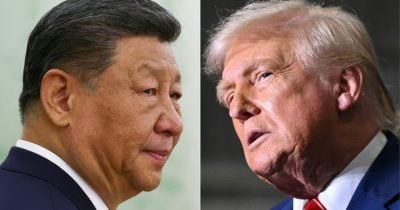China has again made its position on stablecoins unmistakably clear.
At a recent financial policy forum, Pan Gongsheng, governor of the People’s Bank of China (PBoC), described stablecoins as a “new source of vulnerabilities” within the global financial system. He warned that they could undermine smaller economies’ monetary sovereignty and enable illicit financial flows.
According to him, these assets “amplify loopholes in global financial regulation, such as money laundering, illegal cross-border fund transfers, and terrorist financing.” He also stressed that most stablecoin projects fail to meet basic compliance standards such as customer identification and anti-money-laundering checks.
His remarks reaffirm China’s decade-long stance: private digital currencies and stablecoins remain off-limits, even as Beijing continues to advance its digital yuan (e-CNY) as a state-controlled alternative.
Yet as the rest of the world accelerates toward tokenized finance, China’s absence raises the pressing question of whether stablecoins can truly thrive without the world’s largest fintech economy.
A global market moving without Beijing
For now, the answer appears to be yes.
While China doubles down on restrictions, global stablecoin adoption has surged. According to DeFiLlama data, the sector’s total capitalization recently crossed $308 billion, expanding by nearly $100 billion since January.
At the same time, a report from A16z shows that the sector’s transaction volumes surpassed $46 trillion over the past year, rivaling established payment giants such as Visa when adjusted for legitimate activity.
 Stablecoins Volume (Source: A16z)
Stablecoins Volume (Source: A16z)Chris Dixon, a partner at venture capital firm A16z, said:
“Stablecoins have gone mainstream. [They] have found product-market fit, rivaling the world’s largest payment networks in transaction volume.”
This milestone is unsurprising considering that governments across Asia, which once echoed Beijing’s caution, are moving in the opposite direction.
Japan has legalized fiat-backed stablecoins this year, with fintech firm JPYC Inc. launching the first fully compliant yen-denominated token on Ethereum, Avalanche, and Polygon.
Moreover, other leading jurisdictions, including South Korea, Hong Kong, and Singapore, are preparing similar frameworks to license issuers and protect consumers.
In the West, the United States is pushing toward formal oversight through legislation such as the GENIUS Act, while major institutions, from PayPal to Western Union, are rolling out their own tokenized settlement assets.
These moves are transforming stablecoins from speculative tools into regulated infrastructure for payments, remittances, and on-chain treasury management.
That momentum suggests the market can function and flourish without China’s participation because the technology has matured beyond its early crypto-native roots.
Essentially, stablecoins now act as the core liquidity layer of decentralized finance and the backbone of on-chain commerce, enabling instant settlement across thousands of platforms.
Thriving without China: But not entirely free from it
Yet even as the industry expands, China’s influence lingers.
The Asian country’s market size, cross-border trade capacity, and digital-payment infrastructure remain unmatched. Platforms such as Alipay and WeChat Pay process more transactions annually than many entire regions combined. Excluding that ecosystem limits stablecoins’ reach and potential scale.
In practice, the ban has not erased stablecoin activity in China. Instead, it has merely pushed it underground.
Chinese investors and businesses still use dollar-pegged tokens like USDT ($1.00) through offshore exchanges and private OTC desks to move funds internationally or hedge against yuan volatility.
Despite official restrictions, stablecoins remain a quiet instrument of capital mobility within Chinese networks.
This underground usage illustrates how the thriving sector could benefit from China’s eventual inclusion in the technology.
A fully integrated Chinese presence, whether through regulated participation or interoperability between the e-CNY and compliant stablecoins, would link the world’s largest trade economy to blockchain-based payments. This would undoubtedly complete the network effect that stablecoins currently lack.
For now, however, two parallel systems are emerging: an open, market-driven ecosystem led by dollar-backed tokens, and a closed, sovereign digital-currency model built around the e-CNY.
A necessary absence?
China’s decision to stand apart may, paradoxically, strengthen the case for decentralized finance and stablecoins.
By refusing to integrate, Beijing is forcing the rest of the world to build independently. As a result, this process has already created a more diversified, regulation-aware, and institutionally supported market.
Stablecoins have become indispensable to global liquidity, powering decentralized exchanges, tokenized bond markets, and US Treasury instruments. Their growth has continued despite regulatory uncertainty, cyberattacks, and central-bank skepticism.
So, each expansion reinforces their staying power and proves that the concept of a borderless digital dollar can survive without China’s approval.
Still, the long-term picture remains nuanced.
Without China, stablecoins lose access to one of the largest pools of fintech innovation and global trade settlement. With it, they could achieve true interoperability between Western and Eastern payment systems.
For now, the market is proving that thriving without China is possible.
However, thriving globally may be much more difficult because the absence of the world’s most significant digital economy limits scale.
Yet the quiet participation of Chinese investors shows that even a strict policy can’t suppress the appeal of programmable money.
The post The $308 billion question: Can stablecoins thrive amid China ban? appeared first on CryptoSlate.
























.jpg)


 24h Most Popular
24h Most Popular








 Utilities
Utilities